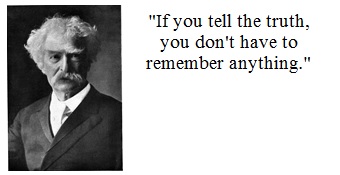Truthfulness & Reputation
The Owasso Character Council exists to promote character and community, striving to strengthen Owasso residents and families by creating a culture of character in all aspects of the community.
For the month of April, we will be focusing on the character trait of Truthfulness.
We are defining Truthfulness as “earning future trust by accurately reporting past facts.”
When researching the definition of the word Truth, we find statements such as:
- the quality or state of being true
- the property (as of a statement) of being in accord with fact or reality
- telling the truth, especially habitually
- corresponding with reality
Truthfulness requires good judgment about:
- what to say (possible risk to our source of information)
- when to say it (in private or before others)
- to whom to say it (to the person responsible for the problem/situation or as a complaint to anyone who will listen)
- how (with sensitivity and tact or intended to hurt)
“Truthfulness is a critical building block for human relationships and therefore has significant consequences for each of us, short-term and long-term.”
Most people will believe what they hear unless the information is proven to be inaccurate. After that, the informant’s word is not as good as it used to be; people then listen with a sense of disbelief. Recall the story from Aesop’s Fables about the boy who cried wolf. The boy lied so many times about the wolf being after the sheep that when the wolf really did attack, none of the villagers responded to his cries for help. If we aren’t truthful at all times, people, especially family and friends, will be suspicious when we share stories; they’ll want proof or verification from other sources. The greater the number of lies and careless statements that pass through our lips, the more corroboration our listeners will need.
It is important, sometimes even a matter of life or death, that people believe us. Nothing is as precious as our reputation to say what we mean and mean what we say.
Always tell the truth! It was Mark Twain who said, “If you tell the truth, you don’t have to remember anything.” It is easier to remember what really happened, what words were really spoken than to try to recall a made-up story or a distorted version. You also  practice it by telling the entire truth immediately rather than telling the story a little bit at a time until finally the whole truth emerges. Credibility is easy to destroy with just some simple untruths told in a moment to: create a better impression, deny involvement, or refuse to acknowledge that an incident has occurred. Remember, what you do is more important than what you say you do!
practice it by telling the entire truth immediately rather than telling the story a little bit at a time until finally the whole truth emerges. Credibility is easy to destroy with just some simple untruths told in a moment to: create a better impression, deny involvement, or refuse to acknowledge that an incident has occurred. Remember, what you do is more important than what you say you do!
